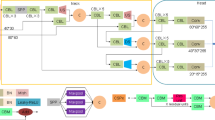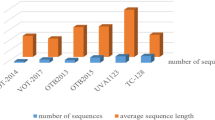Abstract
In order to prolong the lifetime of visual target detection and tracking system based on wireless video sensor networks, many efficient methods have been proposed to reduce the energy consumption of the battery-powered video sensor nodes. Focused on reducing the amount of image data for computing, this paper presents a fast compressive method of target detection for video sensor nodes using structured compressive sensing. The major contributions are as follows: Firstly, we construct a novel structured measurement matrix for sampling the image. Secondly, we use an efficient adaptive Gaussian mixture model for real-time background subtraction. Experimental results show that our method can achieve good performance and over two times faster than traditional Gaussian mixture model.









Similar content being viewed by others
References
Islam T. Almalkawi, Manel Guerrero Zapata, Jamal N. Al-Karaki and Julian Morillo-Pozo, Wireless multimedia sensor networks: Current trends and future directions, Sensors, Vol. 10, pp. 6662–6717, 2010. doi:10.3390/s100706662.
Qi Dai, Wei Sha. “The physics of compressive sensing and the Gradient-based recovery algorithms”. 2009, ArXiv: 0906.1487.
R. Radke, S. Andra, O. Al-Kofahi and B. Roysam, Image change detection algorithms: A systematic survey, IEEE Trans. Image Process., Vol. 14, pp. 294–307, 2005.
Garrett Warnell, Dikpal Reddy. “Adaptive rate compressive sensing for background substraction”, ICASSP: 1477–1480, 2012
Y. Benezeth, P. Jodoin, B. Emile, H. Laurent, and C. Rosenberger, “Review and evaluation of commonly-implemented background subtraction algorithms,” in Proc. IEEE Int. Conf. Pattern Recognition. Dec 2008, pp. 1–4.
Yiran Shen, Wen Hu, “Efficient Background Subtraction for Real-time Tracking in Embedded Camera Networks”, 2012.
T. T. Do, L. Gan, N. H. Nguyen and T. D. Tran, Fast and efficient compressive sensing using structurally random matrices, IEEE Transactions on Signal Processing, Vol. 60, No. 1, pp. 139–154, 2012.
Holger Rauhut, “Circulant and Toeplitz matrices in compressed sensing”, In Processing SPARS09, Saint Malo, 2009
Waheed Bajwa, Jarvis Haupt. “Compressive Wireless Sensing”, IPSN ‘06 Proceedings of the 5th international conference on Information processing in sensor networks, 2012, 134–142.
Zai Yang, Cishen Zhang, and Lihua Xie, “Robustly stable signal recovery in compressed sensing with structured matrix perturbation”. IEEE Trans. Signal Processing, 2012.
Borhan M. Sanandaji, Tyrone L. Vincent and Michael B. Wakin, Concentration of measure inequalities for Toeplitz matrices with applications, IEEE Trans. on Signal Processing, Vol. 61, No. 1, pp. 109–117, 2013.
O. Barnich and M. Van Droogenbroeck, “ViBe: A powerful random technique to estimate the background in video sequences,” in Proc. Int. Conf. Speech Signal Process, Apr. 2009, pp. 945–948.
Acknowledgments
This work was supported by the National Natural Science Foundation of China under Grant 61271274, Natural Science Foundation of Hubei province, China, under Grants 2012FFA108 and 2013BHE009. Wuhan Youth Chenguang Program of Science and Technology (2014070404010209).
Author information
Authors and Affiliations
Corresponding author
Ethics declarations
Conflict of interest
The authors declare that there is no conflict of interests regarding the publication of this article.
Rights and permissions
About this article
Cite this article
Fang, W., Song, Z.Q. Fast Compressive Target Detection for Wireless Video Sensor Nodes. Int J Wireless Inf Networks 23, 89–96 (2016). https://doi.org/10.1007/s10776-016-0298-z
Received:
Accepted:
Published:
Issue Date:
DOI: https://doi.org/10.1007/s10776-016-0298-z




